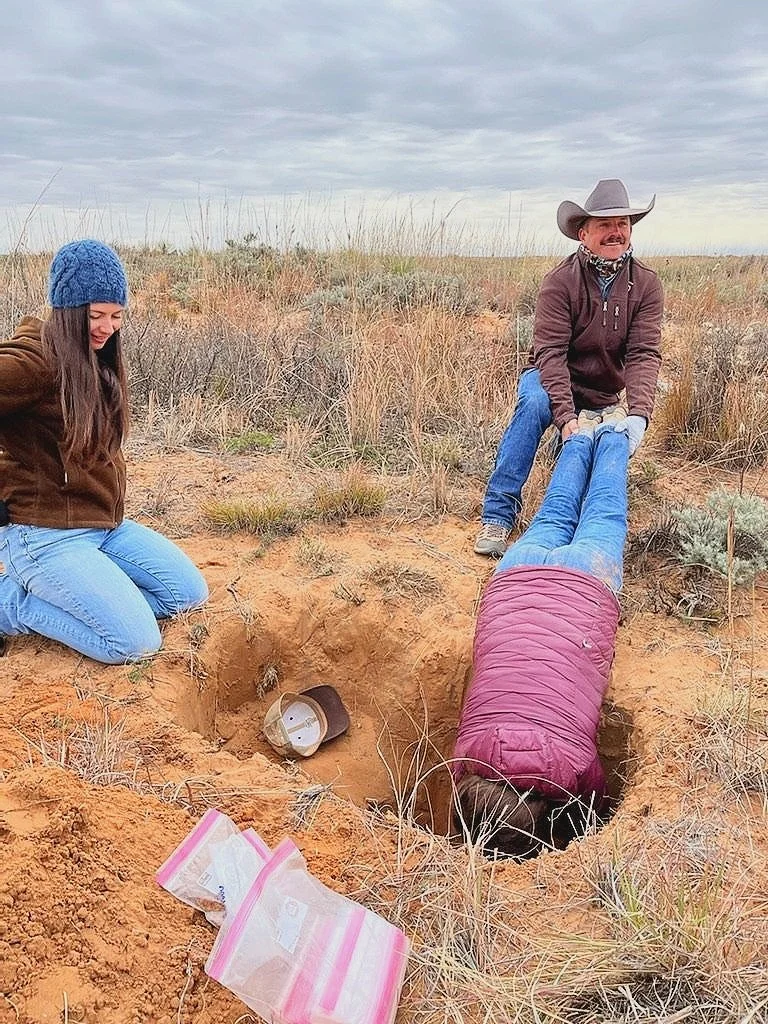background
In this new National Fish and Wildlife Foundation - Southern Plains Grassland funded project in eastern New Mexico, a fledgling partnership is working to balance ongoing cattle grazing that supports local rancher livelihoods, with management of quality habitat for pronghorn and Lesser-prairie Chicken (recently listed as endangered), and healthy soils that have the potential to increase rangeland health.
The Project
In November of 2022, local ranchers, state and federal agencies, and nonprofit organizations assembled together in Roswell, NM to address management goals across approximately 127,000 acres of regional rangelands. To understand how cattle grazing can benefit soil health, soil carbon sequestration, and habitat for pronghorn and the endangered prairie chicken, the team is assessing existing grazing practices as well as historical shrub treatments, collecting baseline soil health data, and mapping local vegetation.
Sharing collected rangeland knowledge will provide common ground for the team when deciding how to meet the group’s varied land management and conservation goals. A focus on soil health has the potential to position ranchers to participate in emerging markets to financially support ongoing rangeland and wildlife habitat stewardship. As knowledge of this landscape grows, ranchers and managers will share information with other landowners in the region.
Our Role
WLC is serving as the Technical Advisor for soil sampling and analysis. This includes landscape stratification and training, and leading a local soils collection team of Tatum, NM high school students. Once soil data has been collected, the WLC team will analyze samples in the lab, share results with land managers, and participate in discussions about ongoing rangeland management.
WLC’s Research Scientist, Megan Nasto, dangling into soil pit to extract a bulk density sample with the help of a local rancher.
Tatum High School students taking soil cores.
-
Landscape stratification is the process of dividing a landscape to be monitored up into units to increase the efficiency of monitoring. An area is divided into relatively uniform units called strata. Stata are areas located in a particular part of the landscape (e.g., flood basin or hill summit), within which vegetation, soil type, management and current status are relatively similar. All areas classified by the same stratum are expected to respond similarly to changes in management and to catastrophic disturbances, such as a combination of drought and fire.
Through landscape stratification, we can reduce the amount of plots that need to be monitored and focus on areas of greatest priority.
-
Soil organic carbon is one of the most important constituents of the soil due to its capacity to affect plant growth as both a source of energy and a trigger for nutrient availability through mineralization.
Partners
Local Ranchers & Private Landowners
Western Landowners Alliance
New Mexico State Lands Office
New Mexico Department of Game & FIsh
Bureau of Land Management- Roswell Field Office
Natural Resource Conservation Service
Las Cruces, NM Field Office
Carlsbad, NM Field Office
Roswell, NM Field Office
Marfa, TX Field Office






